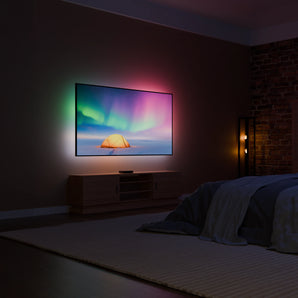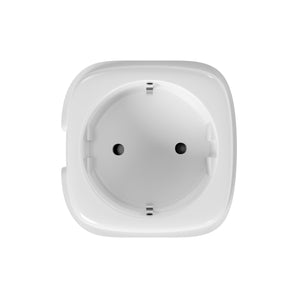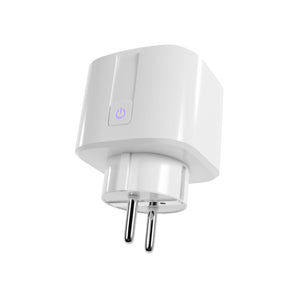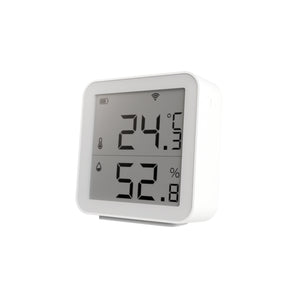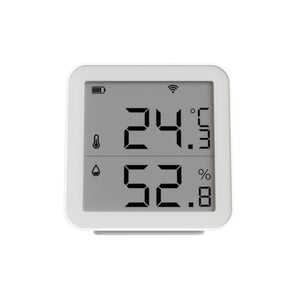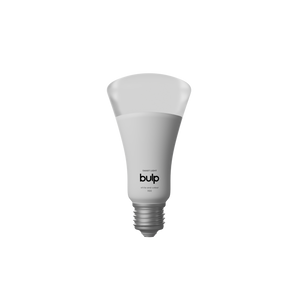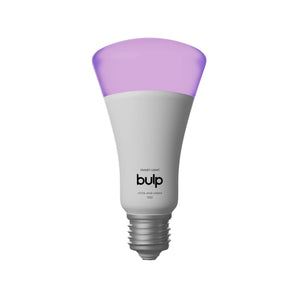Humidity in the house can make a home feel stuffy, uncomfortable, and even unhealthy. It’s not just about clammy walls or foggy windows — excess moisture can damage your home, trigger health issues, and lead to mold in the house. But what actually causes this high humidity in a house? And what’s the best way to fix it?
Let’s dive into the real reasons your indoor humidity might be out of control — and how a smart home can help you take back control.
Why Is It So Humid In My House? Common Causes Most People Don’t Realize
Here’s a complete list of everyday causes of humidity in the house — some obvious, others easy to overlook:
1. Cooking Without Ventilation
Boiling water, steaming vegetables, or frying food all release moisture into the air. Without a good range hood or open window, this adds up quickly.
2. Showering Without an Exhaust Fan
Hot showers create steam. If that steam has nowhere to escape, it spreads throughout the home.
3. Drying Laundry Indoors
Air-drying clothes on racks indoors releases a surprising amount of moisture — especially in winter.
4. Overwatering Houseplants
Too many plants or soggy soil can add to indoor moisture levels.
5. Aquariums or Indoor Water Features
Fish tanks, fountains, or even indoor pools evaporate water into the air daily.
6. Poor Home Insulation
Gaps around windows, doors, or poorly insulated walls allow humid air from outside to seep in — especially in summer.
7. Leaks and Structural Damage
Roof leaks, plumbing issues, or damp crawl spaces can introduce hidden moisture that slowly builds up.
8. Unventilated Basements or Attics
These areas often have limited airflow and can trap moisture easily.
9. Weather & Climate
Living in a naturally humid region or during the rainy season? Your indoor air will likely reflect that, especially if windows are often open.
10. Blocked Vents or HVAC Issues
If your HVAC system isn’t circulating air properly, it may not remove enough humidity from the home.
11. Too Many People in a Small Space
Yes, even people produce moisture through breathing and perspiration — especially in closed spaces with poor airflow.
12. New Construction or Renovation
Fresh concrete, paint, or plaster can take weeks (or months) to fully dry, releasing moisture into the air along the way.
Signs You Might Have a Humidity Problem
How do you know if it's too humid? Watch for these signs:
-
Condensation on windows or walls
-
Musty smell in the house
-
Sticky skin or damp-feeling air
-
Visible mold in your house or on walls
-
Mold smell in the house, especially in corners or closets
-
Increased allergy or asthma symptoms
Use a humidity measuring device, like an air humidity meter or humidity sensor, to get accurate readings. The ideal indoor humidity is typically between 40% and 60%.
How to Fix High Humidity in the House
Now that you know the causes, here’s how to reduce humidity in your house — fast and effectively:
-
Ventilate daily – Open windows, use fans, and keep interior doors open to promote airflow.
-
Install exhaust fans – Especially in kitchens, bathrooms, and laundry rooms.
-
Use a dehumidifier – Essential for damp spaces like basements or rooms with little air circulation.
-
Fix leaks – Check your roof, pipes, and appliances regularly.
-
Avoid drying clothes indoors – Or use a vented dryer if possible.
-
Add a humidity sensor to your smart home – Track moisture levels and set alerts when it gets too high.
-
Automate your dehumidifier – Use a smart plug or smart hygrometer connected to Google Home, Smart Life, Tuya Smart or Alexa to keep humidity under control.
-
Seal and insulate your home – Keep moist air out and dry air in.
Smart Home Tools That Help
If you’re thinking “I want to make my house a smart home”, controlling humidity is a great starting point.
Here’s how smart home technology can help you manage both humidity and energy usage:
-
Create a smart home with Alexa, Google Home or other smart home apps to automate your climate control systems.
-
Use a remote humidity sensor to keep track of conditions from anywhere.
-
Set up a humidity alert system that activates fans or dehumidifiers automatically.
-
Combine this with a power consumption meter or electric usage monitor to stay energy efficient.
-
Track performance with a home energy monitor or energy monitor app to see how humidity control affects your energy use.
Pairing these tools helps you monitor energy usage, reduce unnecessary costs, and protect your home from moisture damage - all from your phone.
